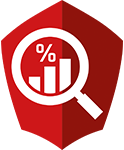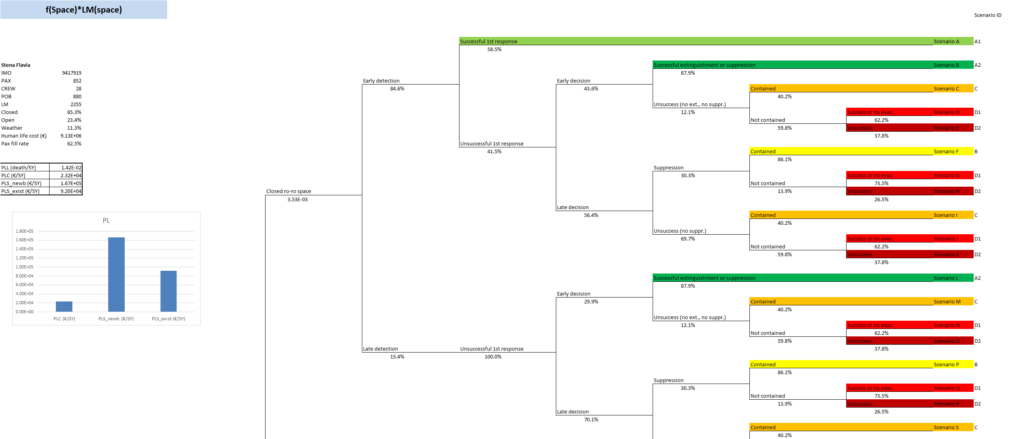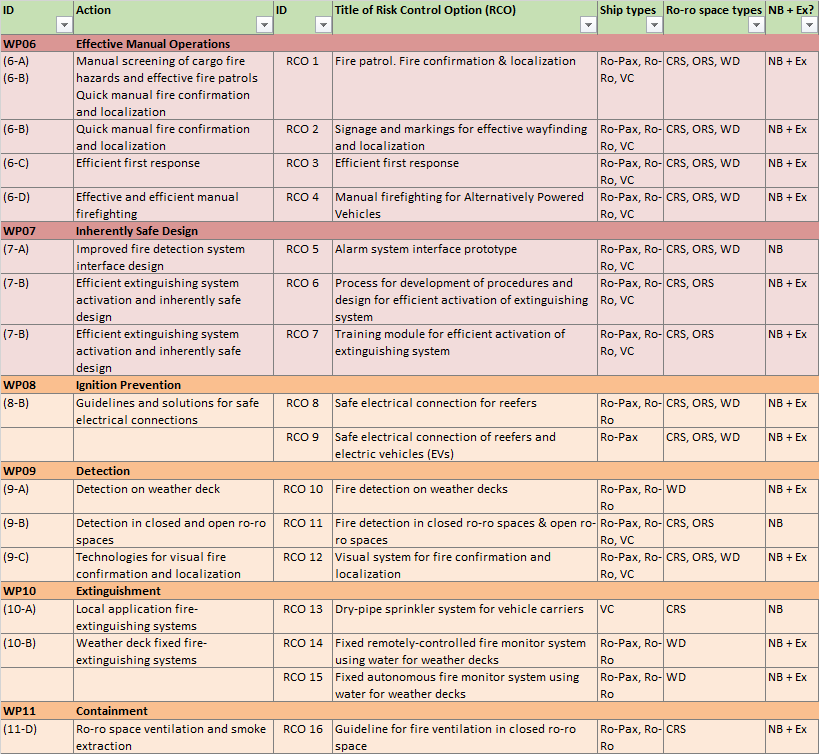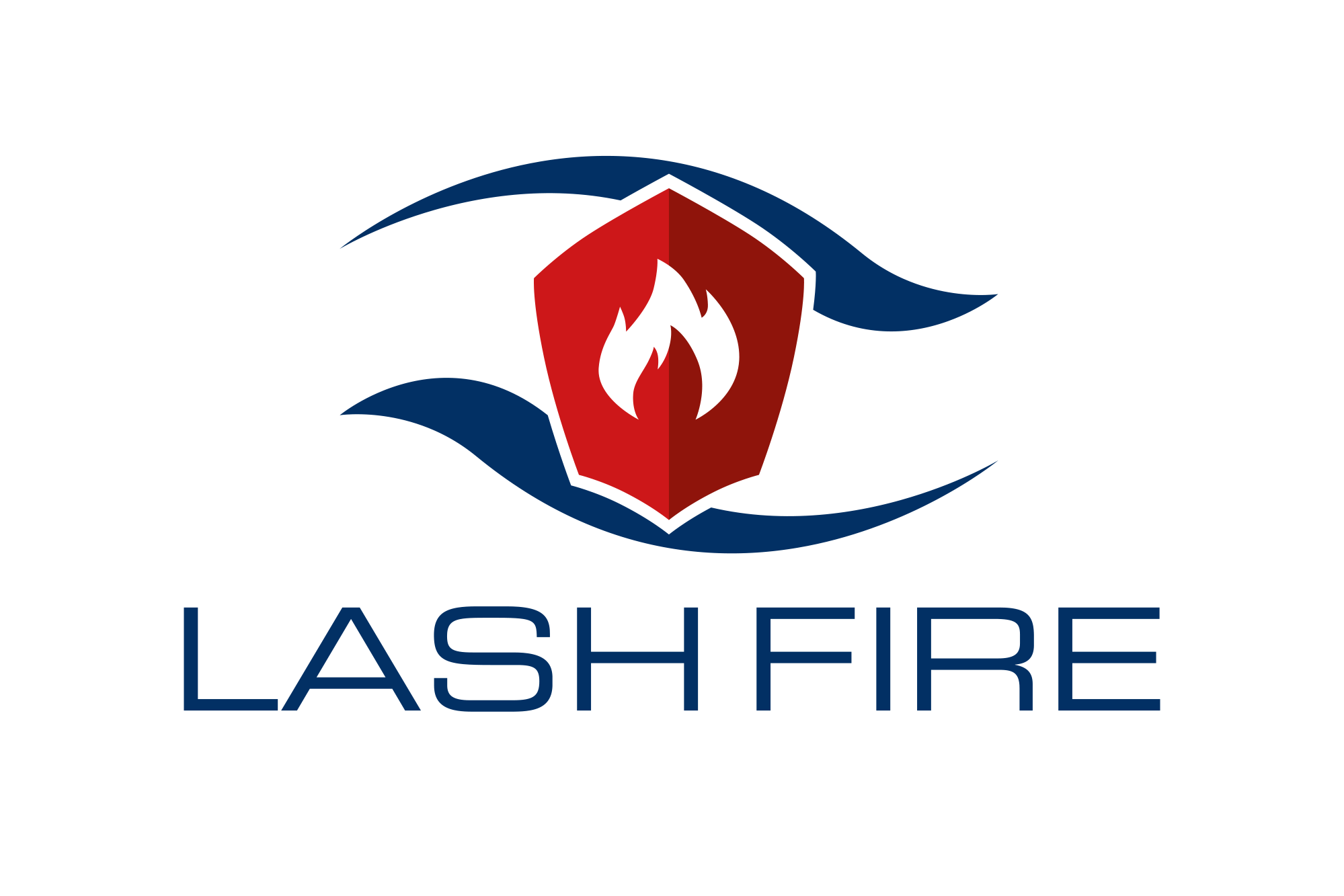
Formal Safety Assesment
WP4 will provide a technical basis for legislative assessment by evaluation of regulatory proposals, based on operational and technical solutions developed in the project.
WP04
Formal Safety Assessment
LASH FIRE will provide a technical basis for future revisions of maritime regulations by assessing risk reduction and economic properties of design and operational solutions developed by the Development and Demonstration Work Packages (WP06-11). The main goal of the Work Package 4 is to address this main objective of the project.
The WP04 team have the following objectives on the agenda:
1. Preparatory steps: Development of a holistic ro-ro ship fire risk assessment model and tool for consequence quantification of fires originating in ro-ro spaces.
2. Analysis: Cost-effectiveness assessment of at least 15 regulatory proposals, based on developed operational and technical solutions, in line with FSA procedure.
3. Cost-effectiveness assessment results exploitation: Preparation of guidelines and proposals for rule-making, based on current regulations and the technical basis.
Evaluation in line with the IMO Formal Safety Assessment procedure
Formal Safety Assessment (FSA) is a structured and systematic methodology, aimed at enhancing maritime safety by using risk analysis and cost benefit assessment. It is used as a tool to help in the evaluation of new IMO regulations for maritime safety, with a view to achieve a balance between maritime safety and costs. Aiming to provide a technical basis and proposals for the revision of relevant international IMO fire safety regulations, it is therefore important to apply the FSA procedure for the solutions brought forward in the project. For more information about FSA read here: MSC.MEPC.2/Circ.12/Rev.2.
Modelling of fire risk in ro-ro spaces
Within the Work Package 4, a holistic risk model and consequence modelling tools will be developed in order to assess the fire risk originating in ro-ro spaces. Not only the new risk model will benefit from the EMSA-funded projects FIRESAFE and FIRESAFE II, but also new modelling techniques will be considered. The development of the risk model will be performed in close interaction with ship operators from the Work Package 5 and thanks to information shared by maritime authorities and ships operators involved in the two LASH FIRE Advisory Groups. Involvement of various maritime stakeholders in the risk model development aims to strengthen the validity of the model.
Cost-effectiveness assessment of the LASH FIRE solutions
The Work Package 4 has the role of conducting the cost-effectiveness assessment of at least 15 solutions that are being investigated in the Development and Demonstration (D&D) Work Packages (WP06-11). The D&D Work Packages will provide the technical inputs and performance of solutions and the Work Package 4 will estimate to what extent these solutions lower the fire risk, compared to the fire risk level established for the reference case. The added cost of solutions compared to the reference case will be assessed by the Work Package 5. Finally, the effectiveness (risk reduction) and cost associated with the implementation of each solution will be compared and prepared for decision-making recommendations.
Recommendations for decision-making
Based on the results of the various assessments of solutions performed in LASH FIRE (e.g. ship integration, cost-effectiveness, etc.), the Work Package 4 will prepare new proposals for regulatory amendments in a way to be presentable to the relevant decision-makers.
The progress of WP04
Status, March 2021
The identification of the main sources and causes of fire ignition in ro-ro spaces have been finalised, as well as the construction of a ro-ro space fire database. The database was successfully processed in order to draw statistics about the fleet and fires in ro-ro spaces, which will be inputs to the risk model.
The Work Package 4 is currently working on the development of the risk model. The type of risk model has been decided and its structure is completed. The quantification of the risk model has now been initiated, which is the final stage before estimating the fire risk for the reference case.
The development of the fire and smoke spread consequence tool and the evacuation consequence tool are in progress. The tools are almost completed, and simulations will soon be up and running.
Status, July 2021
The development of the risk model is going on with the quantification of the reference models. For that purpose, a methodology for expert judgement was developed. A wide range of contributors were involved: seafarers, maritime service/system providers, marine surveyor and researchers.
The development of the fire and smoke spread consequence tool and the evacuation consequence tool are now completed. Simulations are running in order to help quantifying the consequences of the risk model.
Status, November 2022
The risk models for the three types of ro-ro ships were finalized. The results of the fire and smoke spread consequence simulations and evacuation consequence simulations were included into the risk model, where relevant. The current risk level of the generic ro-ro ships were estimated.

Screenshot of the risk model
The Risk Control Measures developed by the D&D Work Packages were preliminarily assessed in terms of ship integration, cost (Work Package 5), risk reduction (Work Package 4), regulatory compatibility and level of support from the maritime stakeholders (Work Package 3). Based on those outcomes, sixteen Risk Control Options were selected and defined for the cost-effectiveness assessment.

List of selected Risk Control Options
The Work Package 5 is currently completing the cost assessment of the Risk Control Options, while the Work Package 4, jointly with the D&D Work Packages, are completing the estimation of the performance or risk reduction of the Risk Control Options.
Downloads
- Firesafe video
- Firesafe Study
- Firesafe Study
- Deliverable D04.2: Ro-ro space fire database and statistical analysis report
(Deliverable is under review, formal approval by EC pending) - Deliverable D04.1: Review of accident causes and hazard identification report
(Deliverable is under review, formal approval by EC pending)
